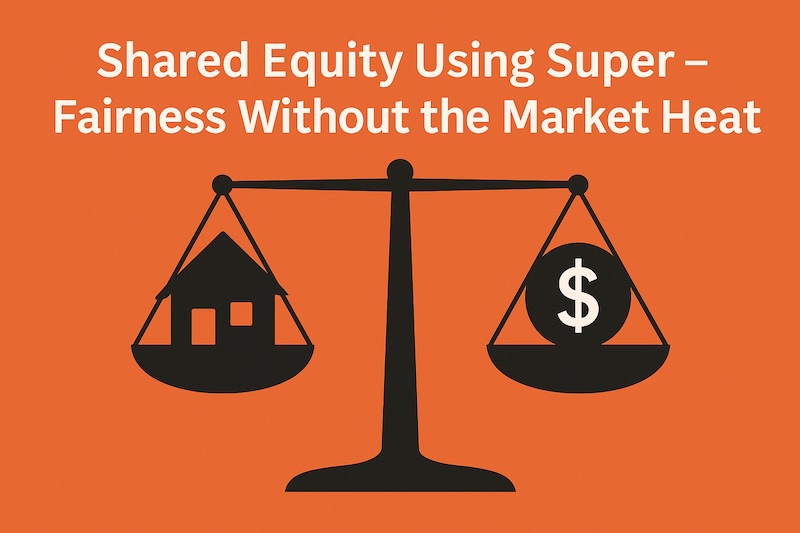Shared Equity Using Super – Fairness Without the Market Heat
Australia’s housing debate is stuck in a familiar rut. Any mention of letting first‑home buyers or lower‑income Australians use part of their superannuation to get a foot on the ladder is met with the same economic warning: it will overheat the market.
It’s a neat soundbite—but a blunt policy tool. In reality, we have options that preserve fairness and economic stability.
The Real Risk: Broad Withdrawals, No Guardrails
The chief concern is valid when proposals allow broad, uncapped withdrawals from super to fund deposits. Modelling indicates such approaches can push prices materially higher—an outcome no one wants.
That’s not a risk we should accept. But it’s also not the only model available.
The Better Alternative: Capped, Repayable Co‑Equity
Instead of a cash withdrawal, consider a co‑equity arrangement with two strict controls:
- Use no more than 50% of the member’s super balance toward the home purchase.
- On sale, return the same percentage equity to super—including any share of gains or losses.
This structure mirrors shared‑equity programs: the super fund becomes a silent partner whose stake is preserved for retirement rather than permanently withdrawn.
Why This Doesn’t Overheat the Market
Evidence from shared‑equity schemes shows that, when tightly targeted—with income caps, regional price caps, limited annual places, and a bias towards new supply—these programs can expand access for low‑ and moderate‑income buyers without broad market‑wide price effects.
Targeting Matters: Who’s In, Who’s Out
If the goal is fairness, focus on those structurally locked out of ownership:
- First‑home buyers in lower and middle income brackets.
- Younger Australians without access to intergenerational transfers.
- Households with steady incomes facing the deposit and servicing gap.
Limit the scheme to principal place of residence purchases, apply regional price caps, and use annual place limits so support goes to those who need it—without opening the door to speculation.
What We Should Be Controlling Instead
If overheating is the true concern, policy should target the actual demand drivers in hot cycles—such as investor lending settings and tax arrangements that encourage speculation. Time‑limited macro‑prudential tools have proven effective at cooling demand without shutting out aspiring homeowners.
The Social Impact Case
Home ownership isn’t just an asset—it underpins stability, security and wellbeing. The social benefits of secure tenure are particularly strong for lower‑income households. Excluding younger and lower‑income cohorts from ownership is an intergenerational equity choice—and it’s widening Australia’s wealth gap.
Conclusion: Fair Access with Fiscal Discipline
We can use super to help buy a first home without draining retirement savings or fuelling price inflation:
Access, not stimulus
- 50% balance cap on super used.
- Repay the same equity share on sale.
- Tight eligibility: income & price caps, PPoR only.
Market stability
- Limited annual places; regional quotas.
- Preference for new builds to add supply.
- Use macro‑prudential levers for investor demand.
